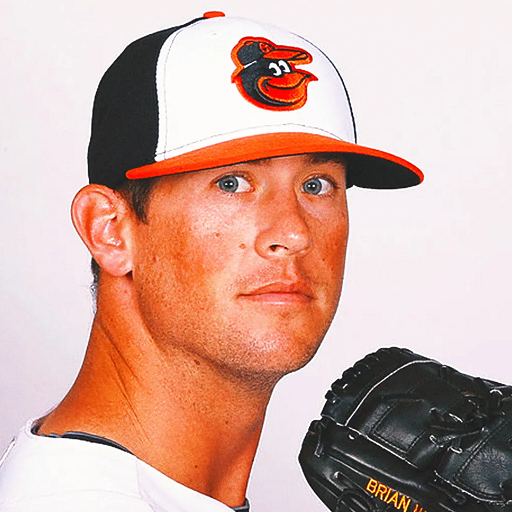
Brian Matusz’s Overdose Reveals a Crisis Baseball Won’t Discuss
Brian Matusz’s overdose at age 37 is not just a tragic headline — it’s a warning from deep inside the world of professional sports. Once a top draft pick and a promising MLB pitcher with the Baltimore Orioles, Matusz’s life came to a sudden end from a suspected drug overdose.
No fentanyl bust.
No party scene.
Just another retired athlete — quietly dealing with pain, pressure, and a past his body couldn’t forget.
This wasn’t about weakness. It was about survival — and the dangerous line athletes walk to stay in the game.

From Pitching Mound to Pain Management
The public saw Brian on the mound — a lefty with heat, control, and confidence. But they didn’t see the cortisone shots, the surgeries, the silent injuries that came with every throw.
Like so many elite athletes, Matusz likely turned to prescription painkillers to manage his body’s decline. Even after retirement, the pain doesn’t retire. It lingers. And for many, that’s when addiction begins.
This wasn’t abuse. It was accumulation.
And when pills stop working, stronger options appear — sometimes through a doctor, sometimes from a friend, and sometimes from the street. Either way, the outcome can be the same.

The Hidden Opioid Crisis in Pro Sports
Matusz’s death joins a growing pattern — athletes dying young from substances they likely didn’t seek to misuse. From football to baseball to Olympic disciplines, the same theme returns:
- Prescription turns into dependence.
- Physical pain becomes emotional isolation.
- Opioids get replaced with black-market pills.
- Fentanyl enters the bloodstream — often unknowingly.
What makes these deaths harder to catch is the silence around them.
Athletes don’t want to lose contracts. Teams don’t want PR disasters.
So the truth gets buried — until someone is.

Athletic Pain Isn’t Weakness — But Hiding It Can Be Fatal
Brian Matusz didn’t deserve to go out like this.
He deserved treatment, support, and a chance to heal without stigma.
📞 If you’re an athlete — current or retired — and you’re living with pain, pills, or pressure, know this:
You are not alone. And you are not weak.
🕯 Philip Seymour Hoffman’s Words Echo Through Another Life Lost
Matusz favorite actor Philip Seymour Hoffman once said:
“Sometimes I chose treatment. Sometimes I was pushed into it. But either way, it was a way to hit pause—to delay the inevitable.”
For Hoffman, rehab didn’t fix everything. But it gave him breathing room.
Time to heal. Time to work. Time to live.
And though it didn’t save him forever…
It saved him many times before.
🕯 Delay death. Choose treatment.
Click to call now — before another jersey is retired too soon.

— Brian Matusz, remembered not just for his pitches, but for the warning his death now delivers.
Don’t suffer in silence. Get a treatment plan that works for your body and your brain.

📞 💬The Next Step Before It’s Too Late?
If you or someone you love is struggling with addiction, answer these 3 quick questions to speak with a recovery advisor:
- Do you need inpatient treatment for alcohol or drug addiction?
- Do you have private PPO insurance or $15,000+ available for care?
- Are you willing to travel out of state for treatment? (A change of scenery produces better outcome)
✅ If you answered YES to all 3, tap here to speak with an advisor now. 🔒 100% Confidential.
Read More on AddictionCured.com
📝 More Celebrity Overdose Cases:
- The Untold Story of Michael K. Williams’ Fatal Overdose
- Prince’s Tragic Overdose: How Fentanyl Stole a Music Icon
- Michael Jackson’s Tragic Overdose: The Dangerous Prescription That Ended the King of Pop’s Life
- Rapper Rich Homie Quan’s Fatal Overdose Highlights the Ongoing Opioid Crisis
- Philip Seymour Hoffman’s Tragic Overdose: The Fentanyl Crisis That Took a Hollywood Icon
- Matthew Perry’s Fatal Ketamine Overdose Highlights the Dangers of Unregulated Drug Use
 Skip to content
Skip to content